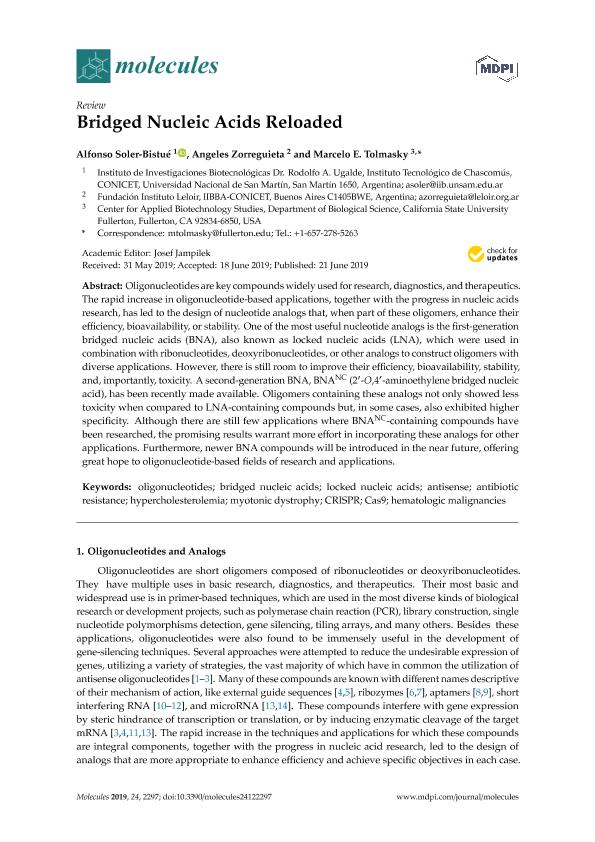Artículo
Bridged nucleic acids reloaded
Fecha de publicación:
06/2019
Editorial:
Molecular Diversity Preservation International
Revista:
Molecules
ISSN:
1420-3049
Idioma:
Inglés
Tipo de recurso:
Artículo publicado
Clasificación temática:
Resumen
Oligonucleotides are key compounds widely used for research, diagnostics, and therapeutics. The rapid increase in oligonucleotide-based applications, together with the progress in nucleic acids research, has led to the design of nucleotide analogs that, when part of these oligomers, enhance their efficiency, bioavailability, or stability. One of the most useful nucleotide analogs is the first-generation bridged nucleic acids (BNA), also known as locked nucleic acids (LNA), which were used in combination with ribonucleotides, deoxyribonucleotides, or other analogs to construct oligomers with diverse applications. However, there is still room to improve their efficiency, bioavailability, stability, and, importantly, toxicity. A second-generation BNA, BNANC (20 -O,40 -aminoethylene bridged nucleic acid), has been recently made available. Oligomers containing these analogs not only showed less toxicity when compared to LNA-containing compounds but, in some cases, also exhibited higher specificity. Although there are still few applications where BNANC-containing compounds have been researched, the promising results warrant more effort in incorporating these analogs for other applications. Furthermore, newer BNA compounds will be introduced in the near future, offering great hope to oligonucleotide-based fields of research and applications.
Archivos asociados
Licencia
Identificadores
Colecciones
Articulos (IIBIO)
Articulos de INSTITUTO DE INVESTIGACIONES BIOTECNOLOGICAS
Articulos de INSTITUTO DE INVESTIGACIONES BIOTECNOLOGICAS
Citación
Soler Bistue, Alfonso J. C.; Zorreguieta, Ángeles; Tolmasky, Marcelo E.; Bridged nucleic acids reloaded; Molecular Diversity Preservation International; Molecules; 24; 12; 6-2019; 1-17
Compartir
Altmétricas




